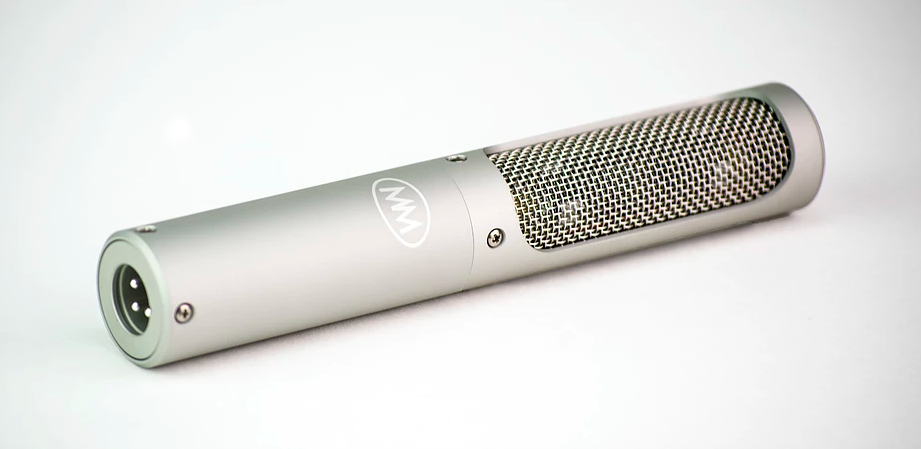New Gear Review: Mesanovic Model 2A Ribbon Microphone (With Audio Examples)
If you’re looking to add a unique, high quality ribbon mic to your collection, but concerned that its potential limited application doesn’t justify the sticker price, the Mesanovic Model 2A might be the answer to your search. But don’t take my word for it, listen for yourself. I’ve included audio clips below, and you can download the full-resolution versions for yourself by clicking here.
Features![]()
The Mesanovic Model 2A ($1199 MSRP) is advertised as having the same design and sound characteristics as their Model 2, but with a transparent phantom powered buffer circuit and a “custom, in-house wound, toroidal transformer”. This gives the 2A a perfectly matched output stage, netting 13dB more gain than its predecessor.
This extra gain is important because it allows you to use your mic preamps in their normal range of operations, and not at the max of their output capabilities. This is particularly important with budget interfaces.
The polar pattern is fixed at bidirectional, and both the front and back are voiced identically. While the back of the mic is reversed in polarity from the front, both sides will sound the same.
I was pretty excited to get my hands on the Model 2A. I love ribbon microphones and rarely record bands without one, however I have yet to use an active ribbon. The mic came in a small black molded plastic case with a built-in handle. While it’s nice to get fancy wood or aluminum flight cases, I appreciated the convenience of a manageable case that lent itself to the engineer who travels more in cabs than planes. The mic has a silver matte finish, and its robust build gives a feeling of solid quality.
In Use
I put the 2A (and sometimes a pair of 2A’s) to work in about 20 sessions over the course of two months. In addition to my own notes, I’ve included some unprocessed* recordings of the mic in use to help inform your own decisions. The same type of mic preamps were used throughout the entirety of my sessions with the 2A: The API 1608’s on-board 312-esqe pres.
Vocals and Acoustic Guitar:
One of the first things that grabbed my attention with the 2A was how great it sounded on vocals. It has a very nice extended top end without sounding hyped in the upper midrange. Make sure you keep a decent distance or use a quality pop filter, because the plosives will get you.
Perhaps the most instantly impressive use I found for the mic was on acoustic guitar. Again, the flat response throughout the midrange really allows you to capture what is there without any hype.
I really like using bidirectional microphones for a vocal and acoustic guitar performance because of the ability to reject the vocals from the guitar mic and vice versa. Below is a demonstration of the 2A’s off-axis rejection, as well as how well it captures both acoustic guitar and vocals. Performance by Henry Black.

Saxophone:
Below is a clip of the 2A on saxophone. You can hear the even response as the performance moves through the octaves. Performance by Yuma Uesaka.
Electric Guitars:
Just to keep it real, here are two comparisons of a reamped Fender Twin with a Royer 121 and a Shure 313. In both cases, the performance was captured via a Radial JDI while tracking. Later, the DI signal was sent back through a Radial reamp box to the amp. While neither competitor features an active design, all the respective mic preamp gains were calibrated with white noise and a 1kHz sine wave through a Fender Twin before reamping.
Clean Electric Comparison. Performance by Votive Crown:

Distorted Guitar Comparison. Performance by Votive Crown:

I set up two 2A’s in a Blumlein pair for a guitar overdub with Henry Black and it did not disappoint:
Drums:
With the Mesanovic being flatter across the midrange than a lot of other options, and the fact that it has tremendous low end, I was eager to place it in front of a drum kit and crush it with an 1176. This made for some very interesting results. Notice the balance of the cymbals and the drums. Performance by Dave Heilman (Sondre Lerche, Regina Spector) while tracking for Fancy Colors.
I also had the pleasure of recording Chris Eagan (Blood Orange, Solange) with the 2A’s in a Blumlein pair.
Summing it Up
I really dig the 2A as I’ve found it to be extremely versatile. Its accentuated low end and flat midrange makes it a favorable choice for many different applications. I will normally use ribbon mics on guitars, horns, percussion, and drums. The fact that the 2A can also handle vocals and hi-fi acoustic work (like piano and acoustic guitars) elevates it value tremendously.
If your budget allows for only a few mics, or if you’re looking for something unique and versatile to bring along to the studio, the 2A surely fits the bill.
*Mono drum room example was compressed with an 1176.
Please note: When you buy products through links on this page, we may earn an affiliate commission.







